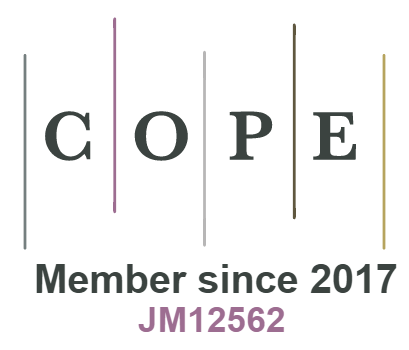Theoretical Approaches of Machine Learning to Schizophrenia
DOI:
https://doi.org/10.18034/ei.v6i2.568Keywords:
Machine learning, Schizophrenia, Support vector machines, functional MRIAbstract
Machine learning techniques have been successfully used to analyze neuroimaging data in the context of disease diagnosis in recent years. In this study, we present an overview of contemporary support vector machine-based methods developed and used in psychiatric neuroimaging for schizophrenia research. We focus in particular on our group's algorithms, which have been used to categorize schizophrenia patients and healthy controls, and compare their accuracy findings to those of other recently published studies. First, we'll go over some basic pattern recognition and machine learning terms. Then, for each study, we describe and discuss it independently, emphasizing the key characteristics that distinguish each approach. Finally, conclusions are reached as a result of comparing the data obtained using the various methodologies presented to determine how beneficial automatic categorization systems are in understanding the molecular underpinnings of schizophrenia. The primary implications of applying these approaches in clinical practice are then discussed.
Downloads
References
Ashburner, J. and Friston, K. J. 2000. “Voxel-based morphometry—the methods,” NeuroImage, 11(6): 805–821.
Boser, B. E., Guyon, I. M. and Vapnik, V. N. 1992. “Training algorithm for optimal margin classifiers,” in Proceedings of the 5th Annual ACM Workshop on Computational Learning Theory, 144– 152, ACM Press.
Bottou, L., Chapelle, O., DeCoste, D. and Weston, J. 2007. Large Scale Kernel Machines, MIT Press, Cambridge, Mass, USA.
Bradley, P. S., Mangasarian, O. L. and Street, W. N. 1998. “Feature selection via mathematical programming,” INFORMS Journal on Computing, 10(2): 209–217.
Burges, C. J. C. 1998. “A tutorial on support vector machines for pattern recognition,” Data Mining and Knowledge Discovery, 2(2): 121–167.
Bynagari, N. B. (2014). Integrated Reasoning Engine for Code Clone Detection. ABC Journal of Advanced Research, 3(2), 143-152. https://doi.org/10.18034/abcjar.v3i2.575
Bynagari, N. B. (2015). Machine Learning and Artificial Intelligence in Online Fake Transaction Alerting. Engineering International, 3(2), 115-126. https://doi.org/10.18034/ei.v3i2.566
Bynagari, N. B. (2016). Industrial Application of Internet of Things. Asia Pacific Journal of Energy and Environment, 3(2), 75-82. https://doi.org/10.18034/apjee.v3i2.576
Bynagari, N. B. (2017). Prediction of Human Population Responses to Toxic Compounds by a Collaborative Competition. Asian Journal of Humanity, Art and Literature, 4(2), 147-156. https://doi.org/10.18034/ajhal.v4i2.577
Castellani, U., Mirtuono, P. and Murino, V. 2011. “A new shape diffusion descriptor for brain classification,” in Proceedings of the 14th International Conference on Medical Image Computing and Computer-Assisted Intervention: Part II (MICCAI ’11), 426– 433.
Castellani, U., Perina, A. and Murino, V. 2010. “Brain morphometry by probabilistic latent semantic analysis,” in Proceedings of the 13th international conference on Medical Image Computing and Computer-Assisted Intervention: Part II (MICCAI ’10.
Castellani, U., Rossato, E. and Murino, V. 2012. “Classification of schizophrenia using feature-based morphometry,” Journal of Neural Transmission, 119(3): 395–404.
Chang C.C. and Lin, C.J. 2011. “LIBSVM: a library for support vector machines,” ACM Transactions on Intelligent Systems and Technology, 2(3), article 27, 2011.
Cox, D. D. and Savoy, R. L. 2003. “Functional magnetic resonance imaging (fMRI) “brain reading”: detecting and classifying distributed patterns of fMRI activity in human visual cortex,” NeuroImage, 19(2): 261–270.
Davatzikos, C., Ruparel, K. and Fan, Y. 2005. “Classifying spatial patterns of brain activity with machine learning methods: application to lie detection,” NeuroImage, 28(3): 663–668.
Duda, RO., Hart, PE. and Stork, D. G. 2001. Pattern Classification, Springer, NewYork, NY, USA, 2nd edition.
Ecker, C., Rocha-Rego, V. and Johnston, P. 2010. “Investigating the predictive value of whole-brain structural MR scans in autism: a pattern classification approach,” NeuroImage, 49(1): 44–56, 2010.
Efron, B. 1979. “Bootstrap methods: another look at the jackknife,” The Annals of Statistics, 7(1): 1–26.
Fan, Y., Shen, D., Gur, R. C., Gur, R. E. and Davatzikos, C. 2007. “COMPARE: classification of morphological patterns using adaptive regional elements,” IEEE Transactions on Medical Imaging, 26(1): 93–105.
Ganapathy, A. (2015). AI Fitness Checks, Maintenance and Monitoring on Systems Managing Content & Data: A Study on CMS World. Malaysian Journal of Medical and Biological Research, 2(2), 113-118. https://doi.org/10.18034/mjmbr.v2i2.553
Ganapathy, A. (2016). Blockchain Technology Use on Transactions of Crypto Currency with Machinery & Electronic Goods. American Journal of Trade and Policy, 3(3), 115-120. https://doi.org/10.18034/ajtp.v3i3.552
Ganapathy, A., & Neogy, T. K. (2017). Artificial Intelligence Price Emulator: A Study on Cryptocurrency. Global Disclosure of Economics and Business, 6(2), 115-122. https://doi.org/10.18034/gdeb.v6i2.558
Hastie, T., Tibshirani, R., Friedman, J. and Franklin, J. 2005. “The elements of statistical learning: data mining, inference and prediction, “The Mathematical Intelligencer, 27(2): 83–85.
Heisele, B., Ho, P., Wu, J. and Poggio, T. 2003. “Face recognition: component-based versus global approaches,” Computer Vision and Image Understanding, 91(1-2): 6–21.
Hofmann, T. 2001. “Unsupervised learning by probabilistic Latent semantic analysis,” Machine Learning, 42(1-2): 177–196.
Joachims, T. 2006. “Training linear SVMs in linear time,” in Proceedings of the 12th ACM SIGKDD International Conference on Knowledge Discovery and Data Mining (KDD ’06), 217–226.
Kloppel, S., Abdulkadir, A., Jack Jr., C. R., Koutsouleris, N., Mour˜ao-Miranda, J. and Vemuri, P. 2012. “Diagnostic neuroimaging across diseases,” Neuroimage, 61(2): 457–463.
Koenderink J. J. and van Doorn, A. J. 1992. “Surface shape and curvature scales,” Image and Vision Computing, 10(8): 557– 564.
Koutsouleris, N., Meisenzahl, E. M. and Davatzikos, C. 2009. “Use of neuroanatomical pattern classification to identify subjects in at-riskmental states of psychosis and predict disease transition,” Archives of General Psychiatry, 66(7): 700–712.
Lao, Z., Shen, D., Xue, Z., Karacali, D., Resnick, SM. and Davatzikos, C. 2004 “Morphological classification of brains via high dimensional shape transformations and machine learning methods,” NeuroImage, 21(1): 46–57.
Lemm, S., Blankertz, B., Dickhaus, T. and M¨uller, K.R. 2011. “Introduction to machine learning for brain imaging,” NeuroImage, 56(2):387–399.
Marill, T. and Green, D.M. 1963. “On the effectiveness of receptors in recognition systems,” IEEE Transactions on Information Theory, 9, 11–17.
Neogy, T. K., & Paruchuri, H. (2014). Machine Learning as a New Search Engine Interface: An Overview. Engineering International, 2(2), 103-112. https://doi.org/10.18034/ei.v2i2.539
Niu, X.X. and Suen, C. Y. 2012. “A novel hybrid CNN-SVM classifier for recognizing handwritten digits,” Pattern Recognition, 45(4): 1318–1325.
Nordahl, C. W., Dierker, D. and Mostafavi, I. 2007. “Cortical folding abnormalities in autism revealed by surface-based morphometry,” Journal of Neuroscience, 27(43): 11725–11735.
Palaniyappan, L. and Liddle, P. F. 2012. “Aberrant cortical gyrification in schizophrenia: a surface-based morphometry study,” Journal of Psychiatry & Neuroscience, 37(6): 399–406.
Paruchuri, H. (2015). Application of Artificial Neural Network to ANPR: An Overview. ABC Journal of Advanced Research, 4(2), 143-152. https://doi.org/10.18034/abcjar.v4i2.549
Paruchuri, H. (2017). Credit Card Fraud Detection using Machine Learning: A Systematic Literature Review. ABC Journal of Advanced Research, 6(2), 113-120. https://doi.org/10.18034/abcjar.v6i2.547
Pereira, F., Mitchell, T. and Botvinick, M. 2009. “Machine learning classifiers and fMRI: a tutorial overview,” NeuroImage, 45(1): S199–S209.
Pontil, M. and Verri, A. 1998. “Support vector machines for 3D object recognition,” IEEE Transactions on Pattern Analysis and Machine Intelligence, 20(6): 637–646.
Rujescu, D. A.N. and Collier, D. A. 2009. “Dissecting the many genetic faces of schizophrenia,” Epidemiologiae Psichiatria Sociale, 18(2): 91–95.
Shenton, M. E., Dickey, C. C., Frumin, M. and McCarley, R. W. 2001. “A review of MRI findings in schizophrenia,” Schizophrenia Research, 49(1-2): 1–52.
Sun, J., Ovsjanikov, M. and Guibas, L. 2009. “A concise and provably informative multi-scale signature based on heat diffusion,” Eurographics Symposium on Geometry Processing, 28(5): 1383–1392.
Ulas, A., Duin, R. P.W. and Castellani, U. 2011. “Dissimilarity-based detection of schizophrenia,” International Journal of Imaging Systems and Technology, 21(2): 179–192.
Vadlamudi, S. (2015). Enabling Trustworthiness in Artificial Intelligence - A Detailed Discussion. Engineering International, 3(2), 105-114. https://doi.org/10.18034/ei.v3i2.519
Vadlamudi, S. (2016). What Impact does Internet of Things have on Project Management in Project based Firms?. Asian Business Review, 6(3), 179-186. https://doi.org/10.18034/abr.v6i3.520
Vadlamudi, S. (2017). Stock Market Prediction using Machine Learning: A Systematic Literature Review. American Journal of Trade and Policy, 4(3), 123-128. https://doi.org/10.18034/ajtp.v4i3.521
Vapnik, V. N. 1995. The Nature of Statistical Learning Theory, Springer, New York, NY, USA.
Wang, Z., Childress, A. R., Wang, J. and Detre, J. A. 2007. “Support vector machine learning-based fMRI data group analysis,” NeuroImage, 36(4):1139–1151.
Whitney, A. W. 1971. “A direct method of nonparametric measurement selection,” IEEE Transactions on Computers, 20(9): 1100–1103.
Yoon, U., Lee, J.M. and Im, K. 2007. “Pattern classification using principal components of cortical thickness and its discriminative pattern in schizophrenia,” NeuroImage, 34(4): 1405–1415.
--0--
Downloads
Published
Issue
Section
License
Engineering International is an Open Access journal. Authors who publish with this journal agree to the following terms:
- Authors retain copyright and grant the journal the right of first publication with the work simultaneously licensed under a CC BY-NC 4.0 International License that allows others to share the work with an acknowledgment of the work's authorship and initial publication in this journal.
- Authors are able to enter into separate, additional contractual arrangements for the non-exclusive distribution of the journal's published version of their work (e.g., post it to an institutional repository or publish it in a book), with an acknowledgment of its initial publication in this journal. We require authors to inform us of any instances of re-publication.









